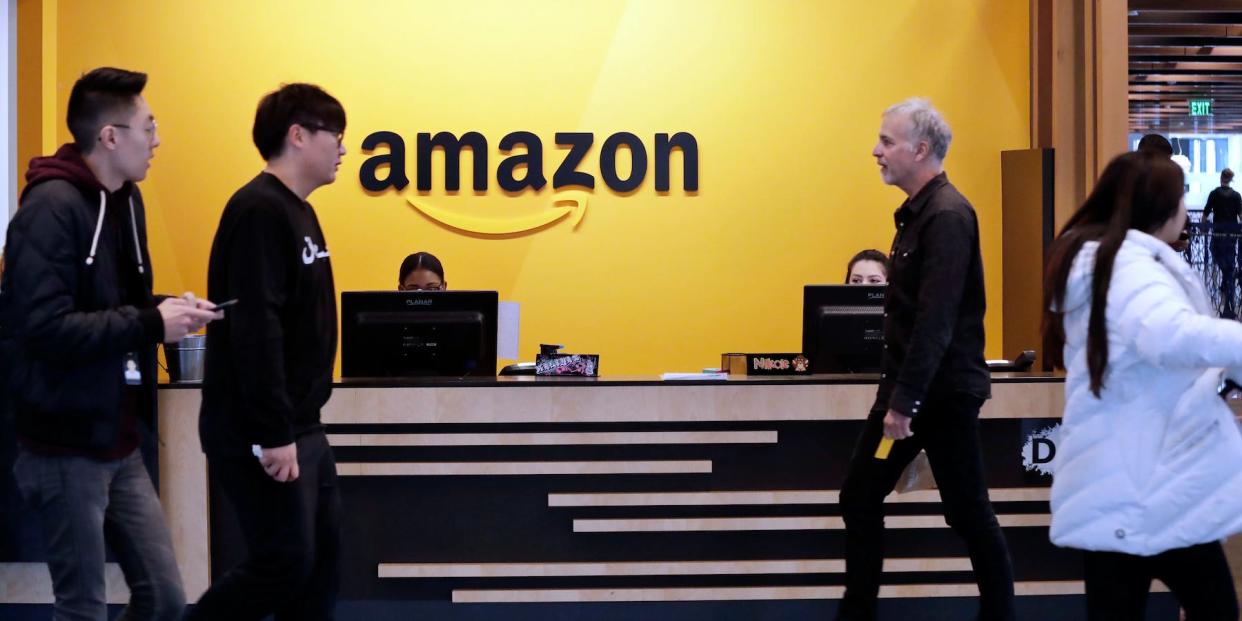Amazon and Meta's 48,000 job cuts usher in Big Tech's new mantra: Revenue per employee

Amazon and Meta say their combined 48,000 job losses are about getting leaner.
For remaining employees, that means being squeezed for value.
The age of growth is over, and the age of revenue-per-employee is in.
Amazon employees that have managed to cling onto their jobs after two devastating rounds of layoffs in the space of three months may feel like they've survived the worst of a brutal period in tech. They're not off the hook yet: Workers will have to fight tooth and nail to prove their worth.
Amazon CEO Andy Jassy made this much clear when announcing on Monday that the company will be laying off around 9,000 workers, including at its cloud business AWS and Twitch. That adds to the 18,000 Amazon already culled in January with an eye to getting leaner.
"Given the uncertain economy in which we reside, and the uncertainty that exists in the near future, we have chosen to be more streamlined in our costs and headcount," Jassy wrote in a blog post.
Meta's Mark Zuckerberg has likewise culled a further 10,000 workers in his "year of efficiency", on top of the 11,000 announced last November.
All told, the two firms have cut 48,000 jobs across two waves of layoffs in less than six months.
This neatly fits a renewed tech drive for lean operations.
The rationale is that these firms over-hired during the pandemic and need to readjust to a high-interest rate economy that makes fighting for every dollar harder.
The tech workforce is about to be squeezed for every last dollar.
Squeezing revenue dollars out of every employee
Specifically, tech leaders are likely to focus in on a metric that fell out of vogue during the boom years.
Keith Rabois, the Founders Fund venture capitalist and ex-PayPal executive, recently told an event held by banking firm Evercore that "revenue per employee" — literally how much an individual worker brings in — was coming back in.
Discussing Twitter's remaking under new owner Elon Musk, Rabois noted that Musk is "steering hard" in terms of revenue per employee.
"You'll hear revenue per employee again, in tech, no one was looking at these metrics at least in the private world, the VC world for at least five years," he said.
"The major expense at all these companies is mainly people," he added. "If you want profits, the only thing you can really do is cut people."
The last time numbers like this were truly in vogue was in the aftermath of the 2008 financial crisis. A 2009 analysis of Big Tech's performance found Google's revenue per employee was over $1 million, the highest of all tech firms. Amazon's was $930,000. The picture was even starker looking at profit per employee which back then was around $210,000 for Google, and just $31,000 for Amazon, in part because Google primarily relies on software and ads sales, while Amazon has a bunch of physical infrastructure to operate.
Amazon currently makes a ton of money. Its most recent earnings showed sales of $142.2 billion for the final three months of 2022, a figure that comfortably beat analyst expectations.
But it's also experienced a near-halving of its market capitalization from a peak of almost $2 trillion in 2021.
Data compiled by Bloomberg shows that compared with its peers, Amazon's employee base grew by 93.1% over the past three years when compared with its pre-Covid levels, putting its growth far above peers like Apple, which grew 19.7%, and Microsoft, which grew 53.5%.
That implies Amazon did suffer from bloat. Strategists at Bank of America indicated in January that Big Tech companies were still too big even after a first wave of layoffs, with some still being up to 20% bigger than they needed to be, probably because of vanity.
All of this is good fodder for the revenue-per-employee camp. The kicker is that it's not clear that all these job cuts will lead to more efficiency.
Jeffrey Pfeffer, professor of organizational behavior at the Stanford Graduate School of Business argues that tech's thousands of layoffs have been driven by "copycat behavior." Management experts say that cuts make workers jittery, weakening their productivity and firms' ability to bring in new talent.
Backed into a corner, however, it looks like CEOs are willing to wear that risk.
Read the original article on Business Insider

